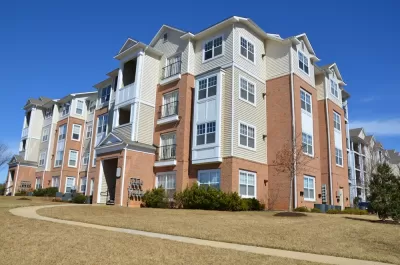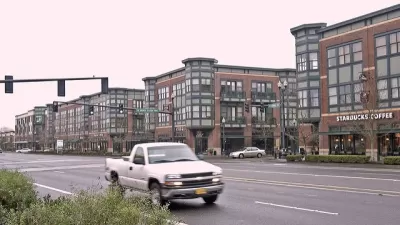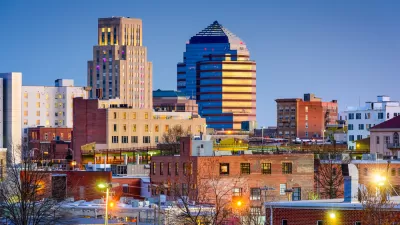Not all density is good, according to the participants at recent event hosted by the Congress for the New Urbanism’s District of Columbia chapter, and examples of new developments cross the line all over the world.

A recent gathering of the Congress for the New Urbanism’s (CNU) District of Columbia featured a discussion of a hot topic in the world of planning: the value of density. According to a dispatch from the event, written by Philip Langdon, most of the participants agreed that not all density is an unequivocal benefit for communities.
Architect and chapter president Dhiru Thadani opened the Council—on ‘Density Without Urbanism/Urbanism Without Density’—by showing rows of high-rise apartment buildings stretching seemingly endlessly across China. ‘People are just being warehoused in large buildings,’ he reflected.
The panel identified examples of “bad” density in the United States, too, in the form of “mid-rise buildings sometimes pejoratively called ‘stumpies.’”
“The typical “stumpy” (the term seems to have originated in the press) consists of five stories of wood-framed apartments sitting atop a concrete podium often containing commercial space or enclosed parking at street level,” explains Langdon.
What’s wrong with stumpies, according to Langdon’s description? “Generally, the buildings lack architectural distinction. The exterior is frequently divided into many vertical segments, sometimes in contrasting materials or colors, in an attempt to make whole thing look less bulky and overwhelming. This fragmented esthetic dismays many city-lovers.”
New Urbanism offers a better middle ground for density, according to participants in the panel—a “goldilocks zone,” if you will. CNU President Mallory Baches pointed to New Urbanist developments for examples, including:
- Del Mar Station in Pasadena, California, with 347 units on 3.4 acres, achieves a density of 102 dwelling units per acre.
- Paseo Verde in North Philadelphia, with 120 units on 1.9 acres, 63.2 units per acre.
- Storrs Center in Connecticut, with 668 units on 47.7 acres, has 14 units per acre.
- Orenco Station in Hillsboro, Oregon, with 2,394 units on 150 acres, has 16 units per acre.
Langdon also recalls Jane Jacobs’ calculation of the ideal density for urban environments, suggesting that “the ideal big-city density is somewhere between 100 and 200 net dwellings per acre.”
There is a lot more to read and ponder about the ideal manifestations of density at the source article linked below.
FULL STORY: When is density good, and when is it harmful to cities?

Montreal Mall to Become 6,000 Housing Units
Place Versailles will be transformed into a mixed-use complex over the next 25 years.

Planetizen Federal Action Tracker
A weekly monitor of how Trump’s orders and actions are impacting planners and planning in America.

DARTSpace Platform Streamlines Dallas TOD Application Process
The Dallas transit agency hopes a shorter permitting timeline will boost transit-oriented development around rail stations.

Philadelphia Swaps Car Lanes for Bikeways in Unanimous Vote
The project will transform one of the handful of streets responsible for 80% of the city’s major crashes.

Interactive Map Reveals America's “Shade Deserts”
Launched by UCLA and American Forests to combat heat-related deaths, the tool maps the shade infrastructure for over 360 U.S. cities.

Bicycles and Books — In Sacramento, Libraries Now Offer Both
Adult library card holders can check out e-bikes and e-trikes for up to one week.
Urban Design for Planners 1: Software Tools
This six-course series explores essential urban design concepts using open source software and equips planners with the tools they need to participate fully in the urban design process.
Planning for Universal Design
Learn the tools for implementing Universal Design in planning regulations.
City of Mt Shasta
City of Camden Redevelopment Agency
City of Astoria
Transportation Research & Education Center (TREC) at Portland State University
US High Speed Rail Association
City of Camden Redevelopment Agency
Municipality of Princeton (NJ)





























